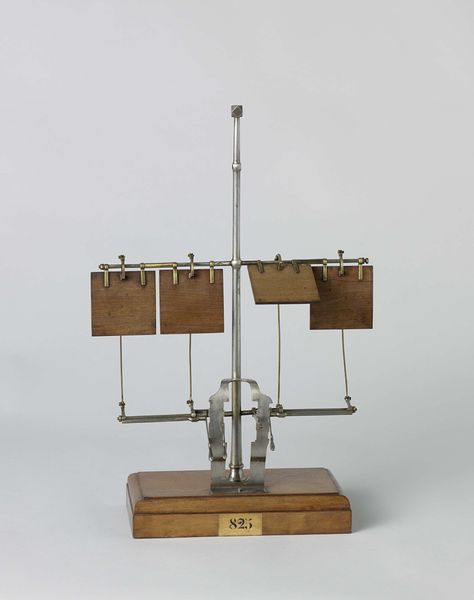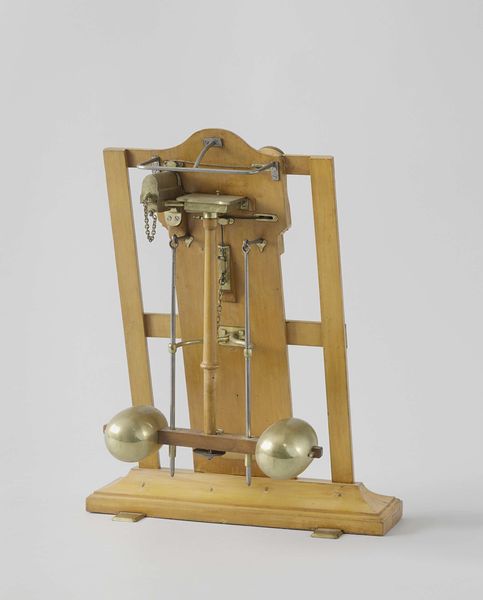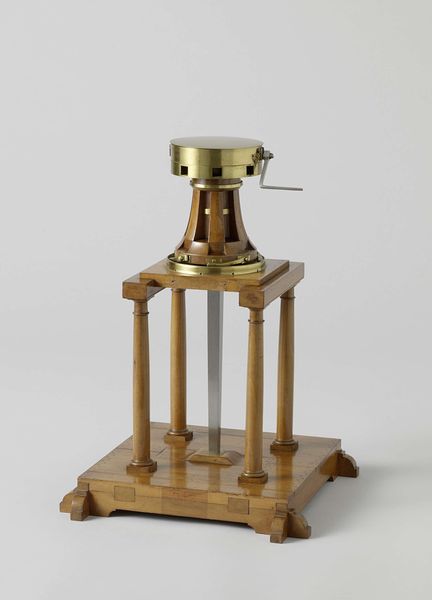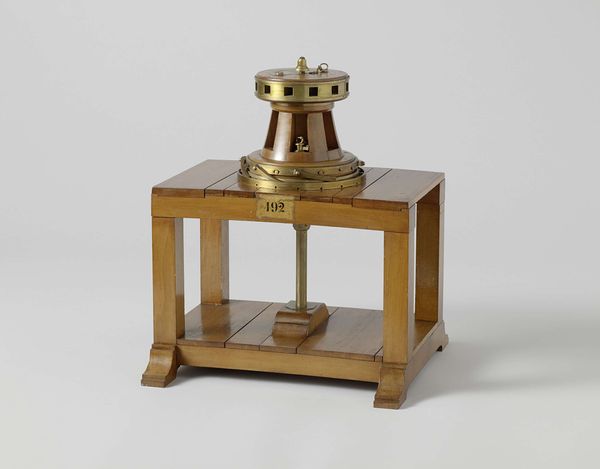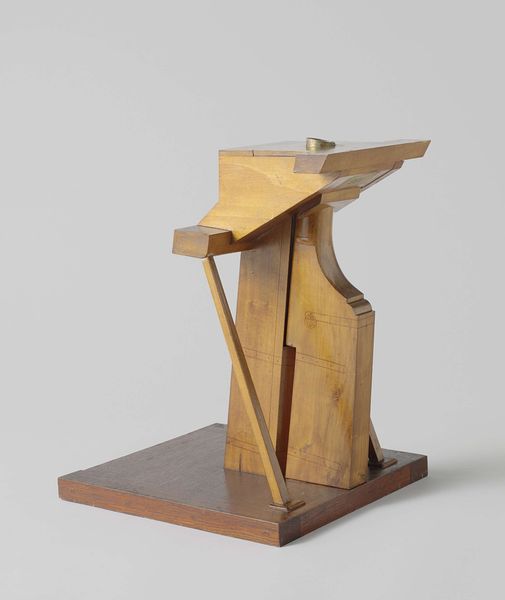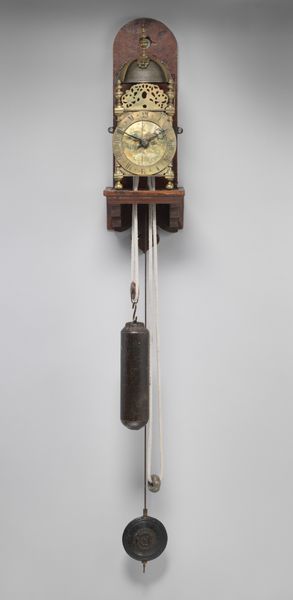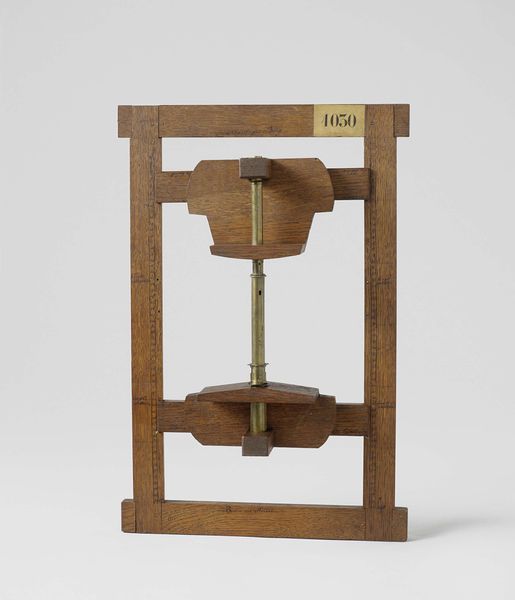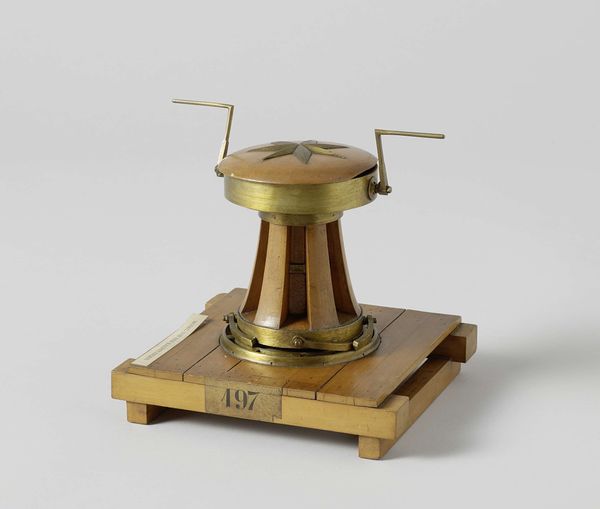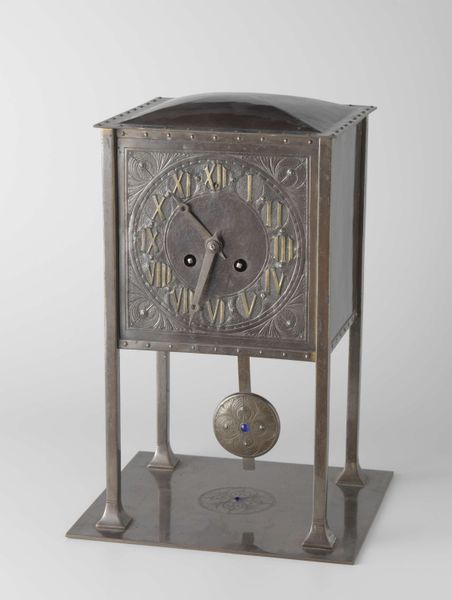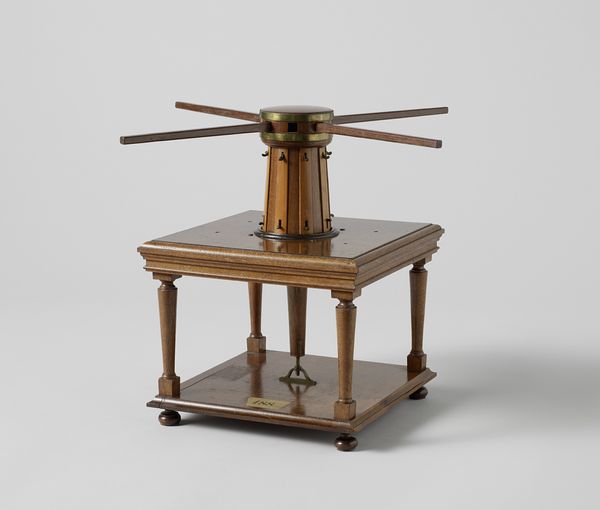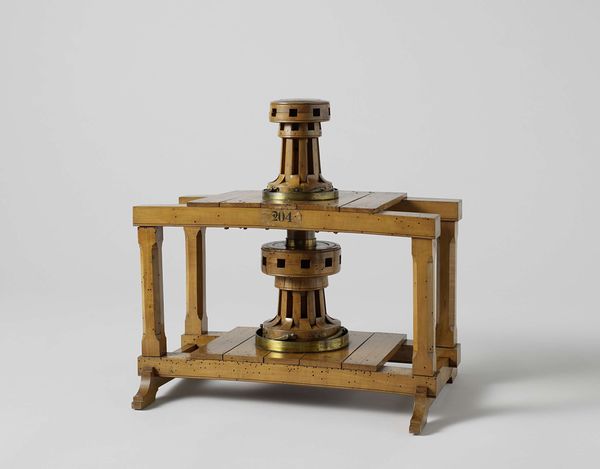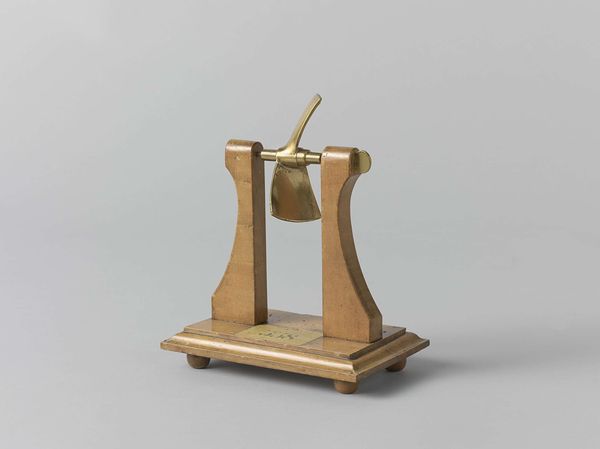
metal, sculpture, wood
#
metal
#
sculpture
#
geometric
#
sculpture
#
wood
Dimensions: height 70 cm, width 65.4 cm, depth 39.6 cm
Copyright: Rijks Museum: Open Domain
Editor: We’re looking at "Model of the Paddle Gear of the Lock at Flushing," made in 1837 at Rijkswerf Vlissingen, incorporating metal and wood. It looks like a strange, functional sculpture… kind of like a miniature machine. What significance might such an object hold? Curator: Consider it as more than just a pretty object. Look closely. Notice the deliberate, repeated geometric shapes. Those aren't accidents. They’re a visual language, pointing towards order and control over nature, especially in the 19th century when industry began to rise. What feelings does it evoke in you? Editor: It makes me think of precision and efficiency, definitely. And a little bit of ingenuity? Like someone figuring something complex out? Curator: Precisely! The paddle gear symbolizes the ambition of the age, reflecting humanity’s striving to dominate the world through engineering. The intricate mechanism reflects social aspirations too; people felt a sense of collective progress through such advancements. It represents not only functional advancement but also cultural and societal shifts of that time. The design has its own visual storytelling through its repetitive gears and overall symmetry. Editor: I hadn't thought of it in those symbolic terms, seeing those shapes not just as gears but as signs of bigger changes. I’m starting to see the story hidden in this design. Curator: Consider it a silent story of progress, of mankind overcoming barriers both physically and symbolically, isn't it intriguing? Editor: Absolutely. This makes me want to look at everything in the museum differently now. I had never looked at such models through a symbolic perspective, but only through historical relevance.
Comments
No comments
Be the first to comment and join the conversation on the ultimate creative platform.
